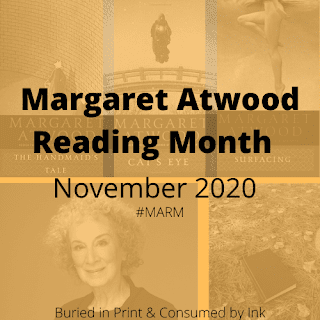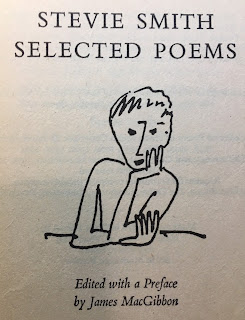Benjamin Moser's biography of Susan Sontag won the Pulitzer Prize for Biography earlier this year. If you're interested in Sontag and read literary biographies, you're going to want to read it.
It's the first full-dress biography as well. It was authorized by David Rieff, Sontag's son, and Moser had access and cooperation. It wasn't the first biography, but it easily supersedes the others.
Sontag was born in 1933 in southern California, grew up mostly in Arizona, lived in New York, Paris, elsewhere, and died in 2004 of the cancer that had been haunting her for years. She was bisexual, probably mostly Lesbian. She wrote, you know, a bunch of pretty good books.
The book got mostly rave reviews, but it did generate two controversies. I'm 70% sure Moser was perfectly happy with the controversy. (Sells more books, amirite?) The first, the bigger one, was around the book Freud: The Mind of a Moralist. The second was about Sontag's failure to come out in the 80s.
Freud: The Mind of a Moralist
Sontag married Philip Rieff, one of her professors at the University of Chicago, when she was 17, after a week-long courtship. As the older (but not that old!) of the two parties, Rieff should probably take most of the blame, but both of them should have known better. The marriage was a success for a very short while and then it wasn't.
But while the marriage was still at least functional that book about Freud came out. Moser makes it out as entirely written by Susan Sontag, sort of like Glenn Close in The Wife, with Jonathan Pryce doing Philip Rieff in the next room, making breakfast and wondering what his new book is going to be about. The Scottish juror in me has to say, not proven. Now if you look up Freud: The Mind of a Moralist on Amazon (it's still in print) the only author credit is Philip Rieff. I have no doubt that's wrong. Early editions of the book listed them both, Sontag under the name of Susan Rieff. But just because while the divorce was happening, Sontag said things like, I wrote that whole damn book by myself, well, that doesn't exactly count as evidence. Rieff was the one doing work on Freud when they met.
Worse, Moser seemed to feel the need to blacken Rieff's own achievements, the better to highlight Sontag's. There's no doubt Sontag will have the greater afterlife. There was no need. For example, Moser writes:
"'Yeah, your husband's crazy,' the family court judge said. 'You get the kid.'"
I thought, a family court judge says anything anywhere near that? Not likely. Now Moser's honest enough to properly footnote; that quote comes from Sigrid Nunez in an interview. Nunez (author of a wonderful memoir of Sontag) was a typist for Sontag years later and then David Rieff's girlfriend for a while. However, she may not even have been born when this family court judge made that purported comment; that quote is definitely second or third-hand. But you have to read the footnotes to know that.
Moser also says that Rieff grew up in the slum of Rogers Park (a neighborhood in Chicago.) That hurt. I grew up in Rogers Park (and Edgewater, the area immediately south) and I didn't know I was a slum kid. But take it from me, no matter how poor Rieff was as a child or where exactly he grew up in Rogers Park, it was not the Lower East Side.
Anyway, I know an underdog when I see one, and Philip Rieff is the underdog in this. On this controversy Moser doesn't come off very well.
On the other hand Moser was quite interesting on the intellectual hothouse atmosphere of the University of Chicago at the time. My father went there for a year--I think it would have been the year before Sontag started--didn't much like it and transferred to Northwestern. But Moser's description certainly gibed with some of my dad's stories.
Coming Out
Susan Sontag certainly did not come out of the closet in the 80s. She slunk out in her final years, but would have preferred not to discuss it.
There was a very strong argument to be made that coming out in the 80s would have made the lives of less well-known homosexuals easier. There was even the argument (one aspect of Silence=Death) it would save lives: a good chunk of the reason AIDS was ignored was because only *those* people got it. Would Sontag's coming out have had had a substantial impact? Hmm. Maybe. Though not like Rock Hudson's death.
And there would have been repercussions. Moser quotes Edmund White as saying if Sontag had come out then she would have lost two-thirds her sales. Her public reputation would have suffered. She might have lost publishers, friends.
Still she could have.
Benjamin Moser gave a talk at the Appel Salon at the Toronto Public Library a bit over a year ago and we went. Back when you could do that sort of thing. I knew I was likely to want to read the book. During the question period, in person he was pretty forgiving of her decision, and understanding of the psychological difficulty someone of Sontag's generation might have in coming out. The book does come across as more condemnatory. One can always hope for and celebrate heroism. For myself I'm not particularly inclined to judge if it doesn't appear.
I do remember some reviews beat up the book because of that condemnatory attitude, but maybe not entirely deservedly.
Overall
I do think it was pretty good. Lots of fascinating stuff about Sontag. It's neither hagiography nor hack job, though I'd probably have gone for a little more hagiography myself. Literary biographers can concentrate either on the life or on the works. Moser spent more time on the life, but not drastically so. You may or may not prefer that. On the works, I thought he was solid about On Photography, that impossible but fascinating work. It was amusing to read that Leni Riefenstahl knew exactly what Sontag had done to her in 'Fascinating Fascism' and hated her for it.
But by talking himself into thinking Sontag was solely responsible for the Freud book, I think he's skewed his sense of her intellectual direction. I've read pretty much all of Sontag at least once. (Not the first novel, the filmscripts, the play, and, of the diaries, only what's been published.) Moser, I'm sure, has read more. Still. It would be impossible for an American who comes of intellectual age when Sontag does to be free of considering Freud, but I don't think Freud is anywhere near as important to her thought as Moser does. She underwent analysis at one point. Well, was there a New York intellectual who didn't?
Sontag's important writers are the a- or anti-Freudians. Canetti, Benjamin, Artaud. Mann. The nouveau roman doesn't have much brief with Freud. She doesn't write about Nabokov directly, but he's clearly important to her; he famously disdains Freud. Illness as Metaphor seems very anti-Freudian to me. Sontag is much more politically engaged than a pure Freudian would be. Camp is a way around Freud; Freud was notoriously dismissive of homosexuality. Why would she be particularly engaged with Freud?
This is a question of interpretation of course, and your mileage may vary. In rereading Under The Sign of Saturn, Sontag's best book for my money, she does cite Freud in discussing Canetti, a citation I doubt Canetti approved of.
One note: Moser says Canetti's first language was Spanish. This is either a weird political statement (Is Ladino just a dialect of Spanish?*) or more likely a simple error.
 |
| Mere Sontagisme! |
*"a sprakh iz a dialekt mit an armey un flot" - A language is a dialect with an army and a navy. A classic bit of Yiddishkeit.




































